Introducing the newest member of our Somebodies series, Persian poet, HAFEZ! This pen name, which means “memorizer” or “safekeeper” is a stand-in for Khwāje Shams-od-Dīn Moḥammad Ḥāfeẓ-e Shīrāzī or خواجه شمسالدین محمّد حافظ شیرازی in Persian. Born around 1325, Hafez’s lyric poetry is regarded by many modern Iranians as the pinnacle of Persian literature. Even today, his words are found hung up in Persian-speaking homes and memorized as proverbs and sayings.
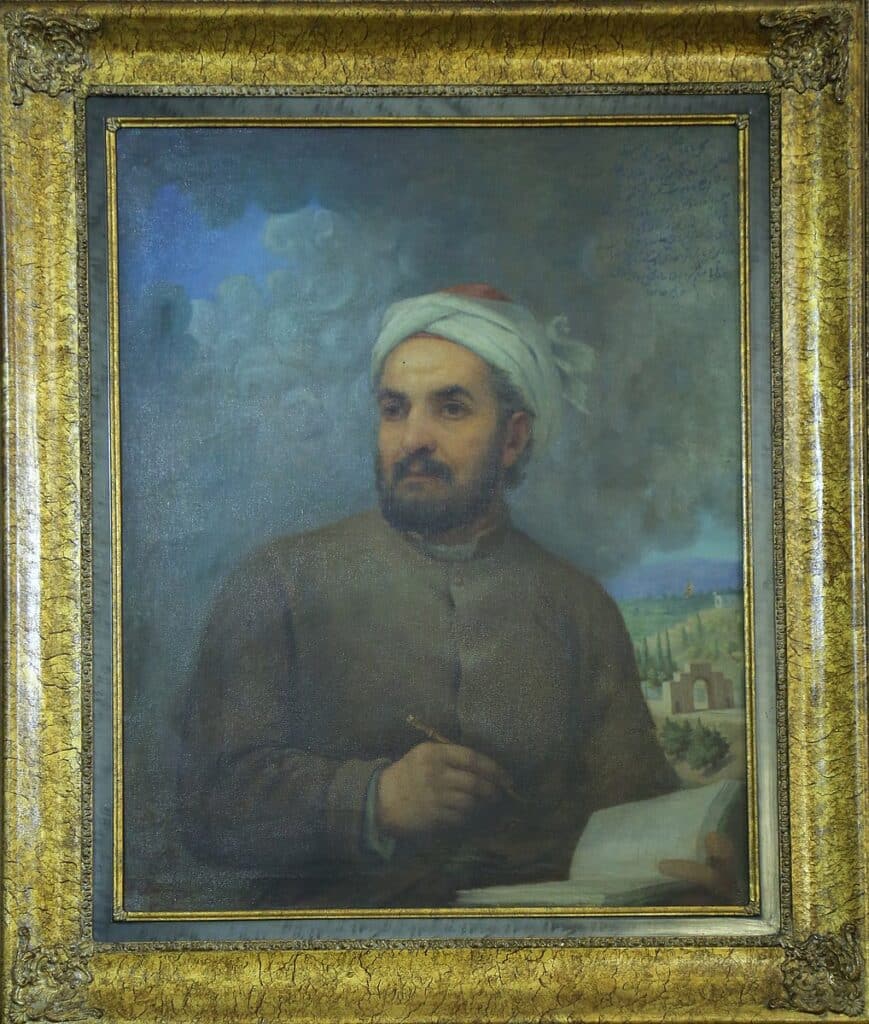
Best known for his collection, The Divān of Hafez, his works can be described as theosophical. A great Medieval word to add to your vocabulary, theosophy in the 13th and 14th centuries was used to describe mystical works by authors inspired by the holy books. In contrast with theologians, those who studied theosophy were interested in practical wisdom, knowledge of the divine, and mysticism. Indeed, Hafez’s works often expressed divine inspiration in the form of lyric love poetry, also called ghazals. His works can get a bit spicy, with lots of mentions of beloveds, bedrooms, and wine, but they are also all about enjoying what is right there right in front of you, be it people, good food and drink, or beauty in nature.
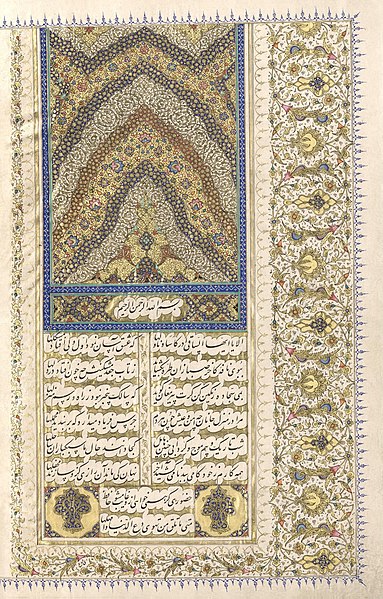
Source: File:DivanofHafez3.jpg
Scholars have debated how much you can read into Hafez’s poetry. Some say every time he is talking about love, what he’s actually talking about is love of or from God. If you read between the lines, you might also find a tone of irony and a theme of hypocrisy; he is widely believed to have been lightly critiquing the religious and ruling establishments of the time. Although Hafez was Muslim (specifically a Sufi), his poetry ignores many taboos and finds humor in common religious doctrines and practices of the time. Scholars disagree about how much of this is tongue-in-cheek, but what we do know is that satire and humor are common devices in public discourse in Iran even today—Hafez fits into that norm and probably influenced it as well!
Although Hafez’s influence can be traced all the way to the West, his influence on the Persian world is much more vast. Even today, his words are found hung up in Persian-speaking homes and memorized as proverbs and sayings. They have found their way into music, visual art, and calligraphy. His tomb is a tourist attraction, not only for the beautiful tile work but also for his influence on Persian culture.
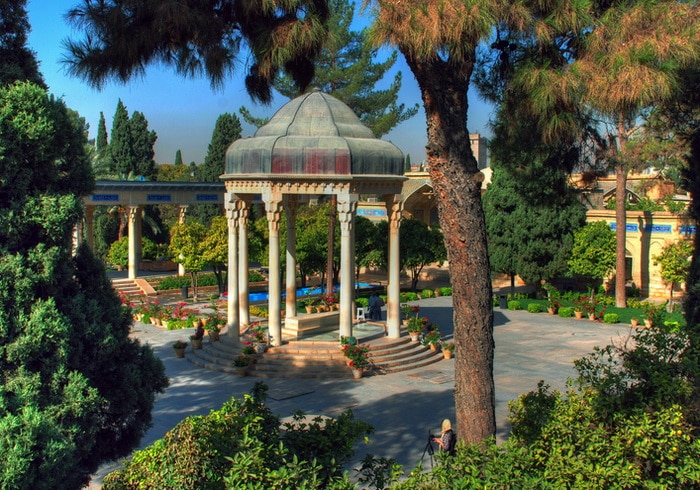
While his influence in the East is more pronounced, Hafez did influence Western poetry as well. His works were first translated into English in 1771 and left a mark on many famous writers such as Thoreau, Goethe, W. B. Yeats, and Ralph Waldo Emerson. Emerson called Hafez “a poet’s poet,” and Hafez even gets a mention in a Sherlock Holmes story, “A Case of Identity.” Sir Arthur Conan Doyle wrote Holmes to say “there is as much sense in Hafiz as in Horace, and as much knowledge of the world.”
Today’s quotation comes from one of Hafez’s poems. Even amidst a rainy week, it seemed appropriate to, with Hafez, celebrate the coming spring! There are few things better than good conversation in a beautiful place—let’s practice and enjoy these things together in the coming months in the spirit of Hafez!
What’s sweeter than a garden and good talk when spring’s new flowers appear?
Don’t forget to check out our Instagram stories for our free smartphone wallpaper, or download below!
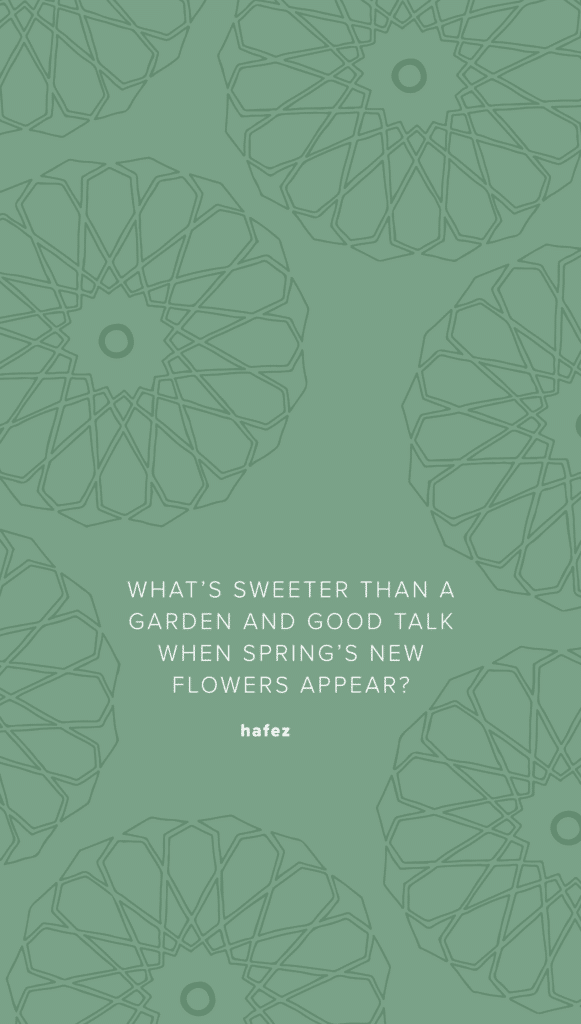





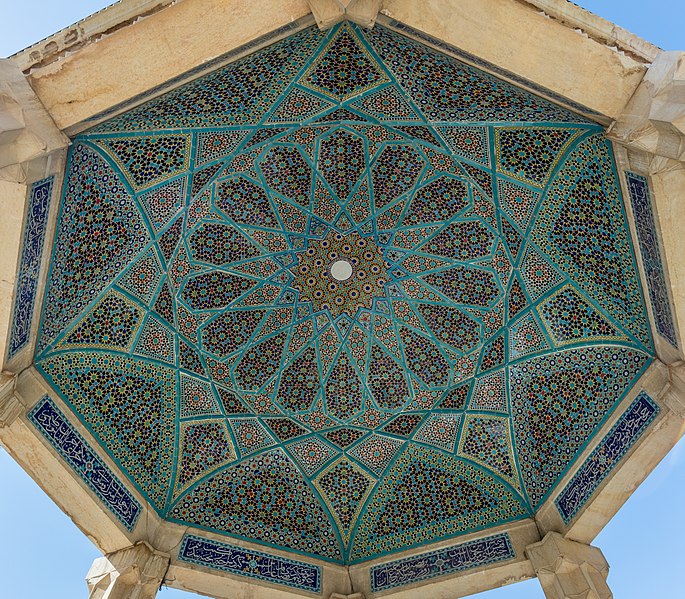
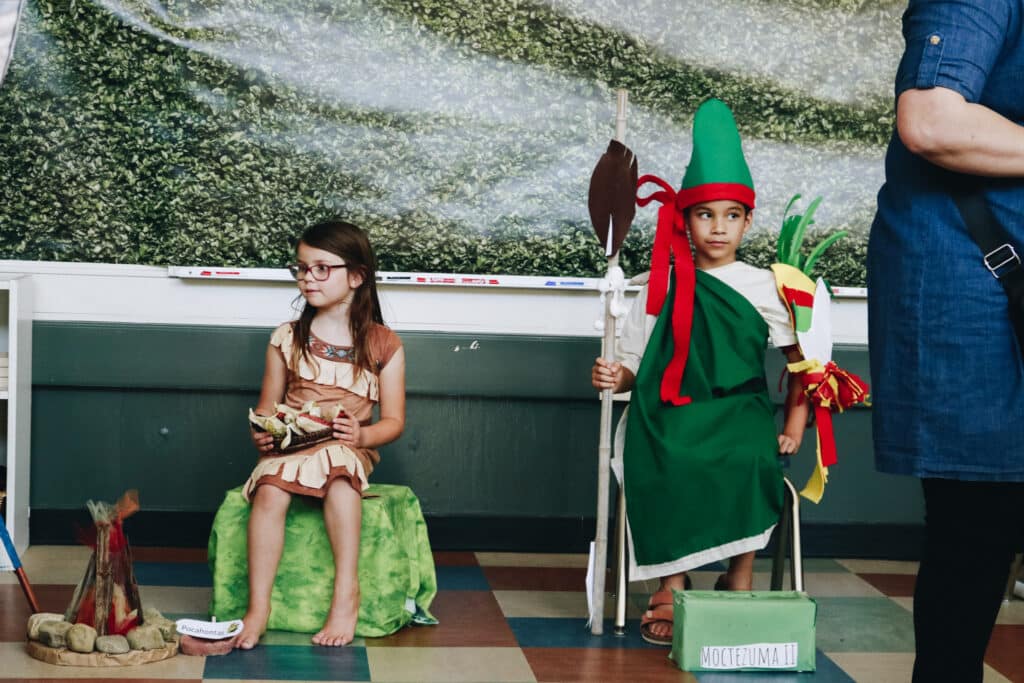







2 thoughts on “sloca somebodies: hafez”
These little tidbits of history keep me coming back for more! Thank you!
We love it! Thank you, Lora!